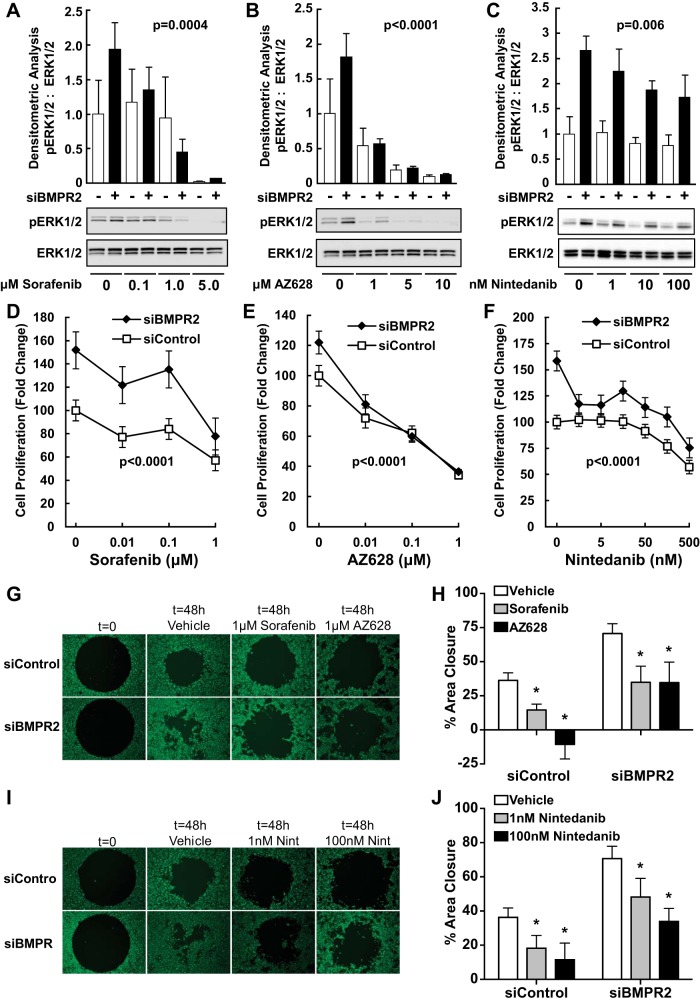Fig. 5.
Inhibition of Raf/ERK signaling and the dysfunctional endothelial cell phenotype associated with BMPR2 knockdown. Effect of sorafenib (A), AZ628 (B), or nintedanib (C) on ERK1/2 activation. HPAECs were transfected with control or BMPR2 siRNAs for 48 h and then exposed to sorafenib or AZ628 for 1 h or to nintedanib for 24 h at the indicated concentrations. Densitometric quantification is expressed as the ratio (means ± SE) of active pERK1/2 to total ERK normalized to the siControl. Sorafenib (P = 0.0004), AZ628 (P < 0.0001), and nintedanib (P = 0.006) decreased ERK1/2 phosphorylation (all P values are main effects for both siControl and siBMPR2 transfected cells). A representative blot from three independent experiments each performed with a different donor is shown. Effects of sorafenib (D), AZ628 (E), or nintedanib (F) on cell proliferation. Sorafenib (P < 0.0001), AZ628 (P < 0.0001), and nintedanib (P < 0.0001) suppressed cell proliferation (all P values are main effects for both siControl and siBMPR2-transfected cells). Cell migration for sorafenib and AZ628 (G and H) or nintedanib (I and J) was measured in Oris 96-well plates. Sorafenib (*P < 0.001), AZ628 (*P < 0.001), and nintedanib (*P < 0.0001), suppressed cell migration (all P values are main effects for both siControl and siBMPR2 transfected cells). D, E, F, H, and J: data are presented as the means ± SE for three different donors.

